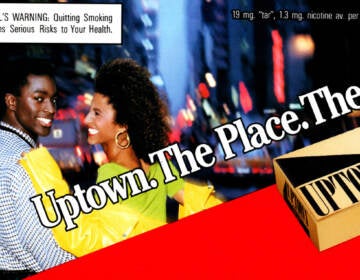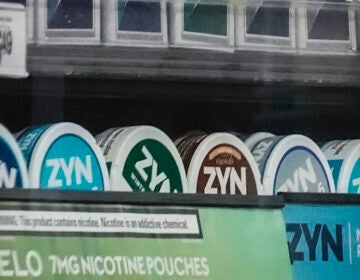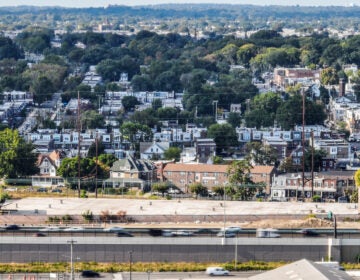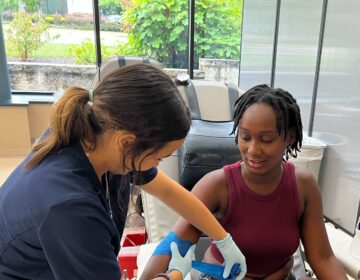Tobacco control in the Delaware Valley improves slightly, but funding falls short
The American Lung Association's annual State of Tobacco Control report shows some progress in reducing smoking-related illnesses, but gaps remain.
Listen 1:17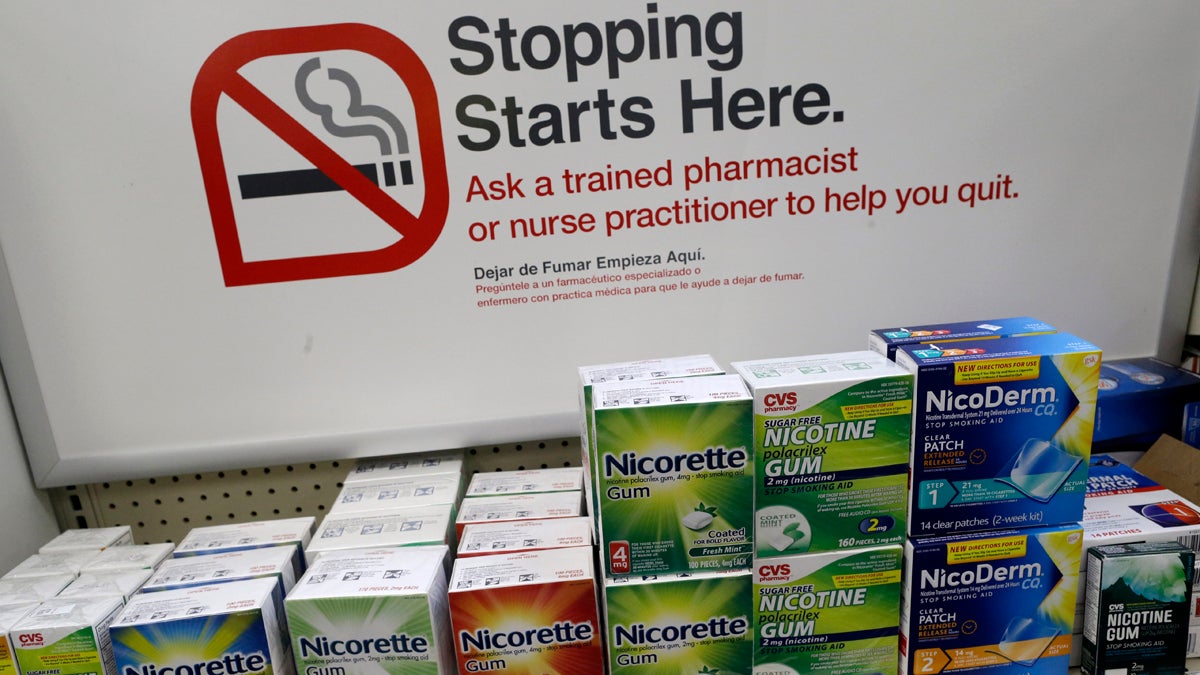
Smoking cessation products are on display where cigarettes used to be displayed at the front of the CVS drugstore in Midtown Manhattan. (AP Photo/Mary Altaffer)
Fewer people today smoke traditional tobacco cigarettes compared to a decade or two ago, and that number continues to decline.
But smoking tobacco is still the leading cause of preventable deaths in the United States, and electronic cigarettes keep nicotine addictions alive.
A new report shows that states are making some progress in strengthening tobacco control efforts and reducing poor health outcomes. But many programs and initiatives continue to go underfunded.
“You have to have programs that are well-funded and sustainable,” said Deb Brown, chief mission officer of the American Lung Association. “You really need to make sure that you have programs that people can count on, for example, to help them quit smoking, where they can count on a program to encourage young people not to ever start smoking.”
The American Lung Association released its newest State of Tobacco Control report Wednesday. It shows that Delaware has taken the lead in prevention and treatment efforts in the Delaware Valley.
Delaware spends about 82% of the amount of money recommended by the U.S. Centers for Disease Control and Prevention to adequately address tobacco use and nicotine addiction.
New Jersey and Pennsylvania spend drastically smaller amounts of the states’ recommended funding levels — 8.7% and 12.8%, respectively.
Much of the funding comes from payouts from the 1998 Tobacco Master Settlement Agreement, which resolved thousands of state lawsuits against major tobacco companies for billions in health care costs in smoking-related illnesses.
Instead, settlement money in many states has been diverted to other state budgetary needs and deficits.
Aside from funding, the report shows that all three states in the Delaware Valley region improved access to smoking cessation services like counseling and nicotine replacement therapies in the last year.
A small number of states, including New Jersey, have gone further and banned sales of some or all flavored vaping and tobacco products. Anti-smoking advocates say many teens and young adults began vaping with the use of these flavored products, even before they reached the federal legal age of sale at 21.
Experts in the field said more work needs to be done, especially to address tobacco’s disproportionate impact on communities of color and people with lower incomes.
In a city like Philadelphia, which has a higher use rate than the national average, Ryan Coffman said tobacco companies aggressively target Black and brown neighborhoods with advertising and marketing for tobacco and nicotine products.
Coffman is the tobacco policy and control program manager for SmokeFree Philly, which is part of the city’s Division of Chronic Disease and Injury Prevention at the Department of Public Health.
He said the effects of that tobacco marketing, even decades later, are still evident.
“A walking assessment that we had done at one point that showed a child in one part of the city was passing one tobacco retailer on a walk to school,” Coffman said, “while another child was passing 16 tobacco retailers on a walk to school.”
Coffman said there’s also higher tobacco use among LGBTQ individuals, people with behavioral health challenges, and veterans.
Over the years, he said the city has implemented its own tobacco control initiatives, on top of any state and federal efforts. It included a cap on the number of tobacco retailers by city district and near schools, a higher permit fee price to sell tobacco products, and regulations to keep retailers in compliance with sales laws.
That’s in addition to more tobacco and nicotine education, Coffman said, making treatment options accessible and more affordable to people who need them, and meeting people where they are.
“There is a tremendous urgency not to let our foot off the gas and to continue to work within these communities, so that those communities with the higher rates of tobacco use can enjoy the same gains, rights in life, and livelihood that all of us deserve in the city of Philadelphia,” he said.
If you or someone you know is seeking help to quit smoking or tobacco use, each state provides some free services:
Delaware Quitline: 1-866-409-1858
New Jersey Quitline: 1-866-657-8677
Pennsylvania Quitline: 1-800-784-8669

Get daily updates from WHYY News!
WHYY is your source for fact-based, in-depth journalism and information. As a nonprofit organization, we rely on financial support from readers like you. Please give today.


